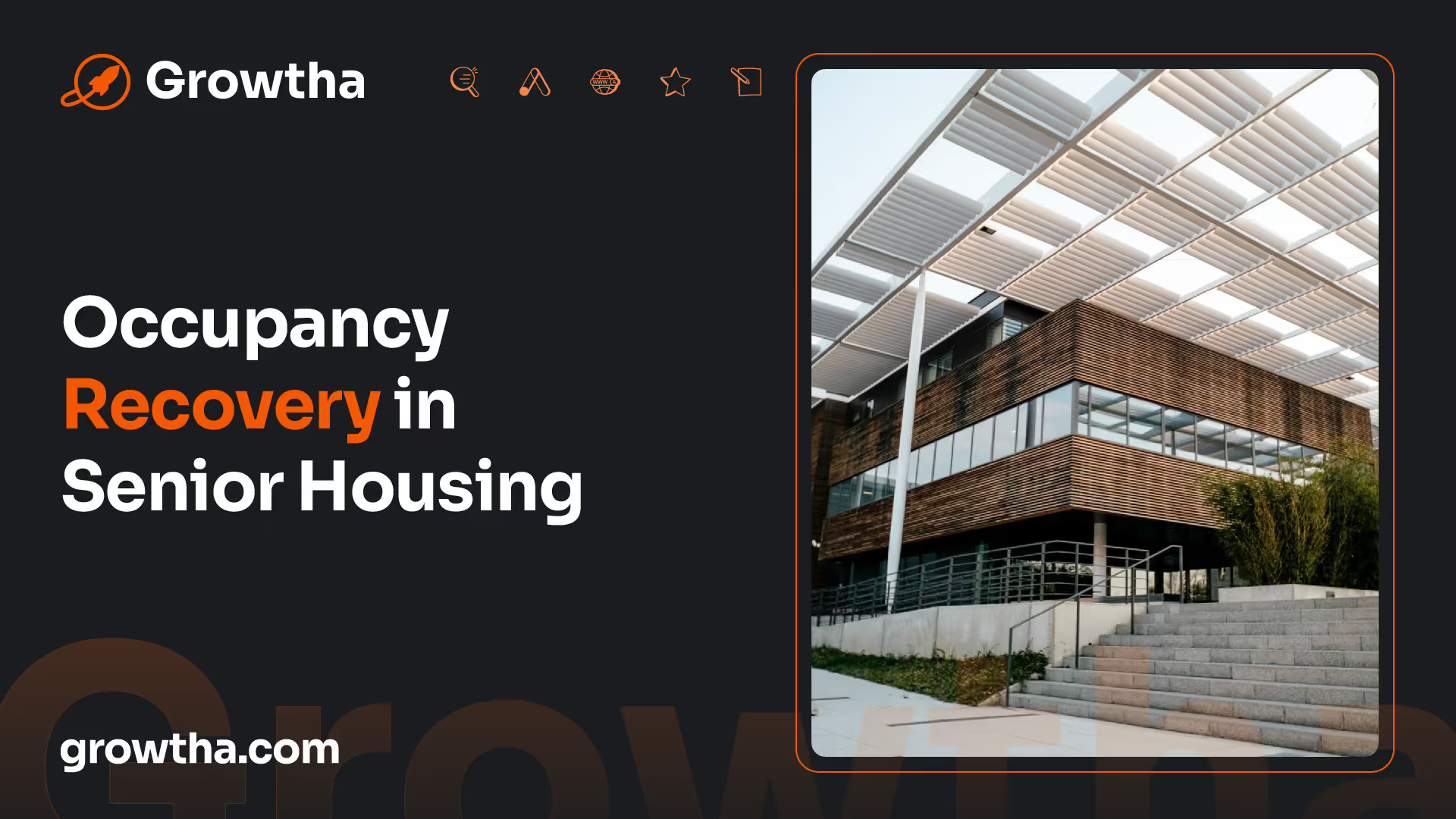Assisted Living Facilities Market Trends 2023-2030
These trends aim to cater to the diverse needs and preferences of older adults.


Assisted Living Facilities Market Trends 2023-2030
Trends in Assisted Living Facilities
As the landscape of senior housing continues to evolve, several trends are emerging in the assisted living facilities market. These trends aim to cater to the diverse needs and preferences of older adults. In this section, we will explore two significant trends: market segmentation and wellness programs in senior housing.
Market Segmentation
The senior living industry is experiencing sector maturation, with operators, developers, and capital providers segmenting the market by price point and service offerings. This approach allows for a more targeted approach to meet the specific needs of different groups of seniors. For instance, there are offerings for the "younger old," middle-income cohort, and ultra-luxury retirement communities. Moreover, traditional senior housing products continue to be available, catering to a broad range of individuals [1].
Market segmentation in assisted living facilities showcases a shift towards customization and personalization. By offering a range of options, providers can better serve the unique preferences and financial capabilities of older adults. This approach ensures that individuals can find a living arrangement that aligns with their lifestyle, budget, and care needs.
Wellness Programs in Senior Housing
Recognizing the importance of overall well-being, many senior housing operators are incorporating wellness programs into their offerings. These wellness programs provide residents with opportunities to enhance their quality of life through various dimensions of wellness, including physical, social, emotional, intellectual, and spiritual aspects.
By integrating wellness programs into senior housing, operators can provide a significant competitive advantage. Potential residents seek communities that prioritize their well-being and provide opportunities for personal growth and engagement. These programs may include fitness classes, social activities, educational seminars, spiritual services, and access to nature or outdoor spaces. By offering a holistic approach to wellness, senior living facilities can enhance the overall experience for their residents.
The incorporation of wellness programs in senior housing reflects a shift towards a more proactive and holistic approach to aging. By addressing the diverse needs of older adults across multiple dimensions, assisted living facilities can help residents maintain their independence, improve their overall health and well-being, and foster a sense of community.
As the assisted living facilities market continues to evolve, these trends in market segmentation and wellness programs play a vital role in meeting the changing needs and expectations of older adults. By embracing these trends, providers can ensure that their offerings remain relevant, appealing, and conducive to the well-being of their residents.
Influence on Health Care
As the assisted living facilities market continues to evolve, it has a significant influence on the overall healthcare landscape. Two key aspects of this influence are social determinants of health and occupancy recovery in senior housing.
Social Determinants of Health
Senior housing operators have the ability to influence social determinants of health for older adults, thereby impacting their overall well-being. By providing a supportive and engaging environment, these operators can play a vital role in managing chronic illnesses, preventing hospitalizations, and reducing healthcare spending [1]. Recognizing senior housing as part of the healthcare continuum allows operators to participate in the revenue streams associated with a capitated risk-sharing model of care.
By addressing social determinants of health such as access to nutritious food, social engagement, and physical activity, senior housing facilities can contribute to the overall health of their residents. This holistic approach to care helps to improve quality of life and enhance overall health outcomes.

Occupancy Recovery in Senior Housing
The senior housing market has experienced positive trends in occupancy recovery. The number of senior housing units under construction is at its lowest since 2015, indicating a balance between supply and demand. This has resulted in ongoing improvement in occupancy rates, demonstrating the resilience of the senior housing sector [1].
In the second quarter of 2022, the occupancy rate for senior housing rose to 81.4 percent, marking the fifth consecutive quarter without a decline. This recovery in occupancy rates reflects the robust demand for senior housing and the favorable market conditions. As occupancy rates continue to improve, senior housing facilities can provide a safe and comfortable living environment for older adults, promoting their overall well-being.
The influence of assisted living facilities on health care extends beyond the individual residents. By adopting innovative practices and ensuring high-quality care, these facilities contribute to the health care ecosystem as a whole. This includes collaborating with healthcare providers, implementing evidence-based wellness programs, and integrating technology to enhance care delivery.
As the market for assisted living facilities continues to grow globally, driven by increasing demand for sustainable and innovative products and the widespread adoption of technology, the influence on health care is expected to expand further. By recognizing and addressing social determinants of health and fostering occupancy recovery, assisted living facilities can play a vital role in promoting the health and well-being of older adults in our society.
Global Market Projection
Looking ahead, the global market for assisted living facilities is expected to experience steady growth from 2023 to 2030, reaching multimillion figures by 2030 [2]. This growth can be attributed to various factors, including the preference for sustainable products and the integration of technology within the industry.
Sustainable Products Preference
One significant trend in the assisted living facilities market is the increasing preference for sustainable and eco-friendly products [2]. As environmental consciousness continues to rise, both consumers and providers are recognizing the importance of incorporating sustainable practices into their operations. This preference for sustainable products extends to various aspects of assisted living facilities, including building materials, energy-efficient systems, and environmentally friendly amenities.
By incorporating sustainable products, assisted living facilities can not only reduce their carbon footprint but also appeal to environmentally conscious individuals and families seeking long-term care options. This shift towards sustainability aligns with the broader global movement towards sustainable practices and demonstrates the industry's commitment to responsible and environmentally friendly operations.
Technological Integration
Another significant trend in the assisted living facilities market is the increasing integration of technology to enhance product quality and efficiency. Assisted living facilities are harnessing the power of cutting-edge technologies, such as artificial intelligence, machine learning, and blockchain, to improve various aspects of their operations.
Technological integration offers numerous benefits in the context of assisted living facilities. For instance, AI-powered systems can enhance safety and security measures by monitoring resident activity and detecting potential risks. Machine learning algorithms can analyze data to provide personalized care plans and improve overall resident well-being. Additionally, blockchain technology can enhance data security and privacy, ensuring the confidentiality of sensitive resident information.
By embracing technological advancements, assisted living facilities can enhance the quality of care provided, streamline administrative processes, and improve overall operational efficiency. This integration of technology not only benefits the facilities themselves but also enhances the resident experience and satisfaction.
As the assisted living facilities market continues to grow, the increasing preference for sustainable products and the integration of technology are expected to shape the industry's future trajectory. By adapting to these global market trends, assisted living facilities can meet the evolving needs and expectations of residents and their families while striving for a sustainable and technologically advanced future.
Growth Factors
To understand the trends in the assisted living facilities market between 2023 and 2030, it is important to analyze the growth factors that are driving this industry forward. Two key factors contributing to the growth of the market are the demand for innovative products and the adoption of technology.
Demand for Innovative Products
Innovation plays a crucial role in the growth of the assisted living facilities market. There is an increasing demand for sustainable and eco-friendly products in this industry, as highlighted by the growing preference for such products [2]. Assisted living facilities are focusing on providing products that are not only efficient but also environmentally friendly. This shift in consumer preference has led to the development of innovative products that meet these criteria.
By offering sustainable products, assisted living facilities can attract environmentally conscious consumers and stay ahead of the competition. These innovative products can range from energy-efficient appliances and lighting systems to eco-friendly building materials and waste management solutions. By incorporating such products into their facilities, assisted living providers can create an appealing and sustainable living environment for their residents.
Adoption of Technology
The widespread adoption of technology is another significant growth factor in the assisted living facilities market. Technology integration has become essential for enhancing product quality and efficiency, as well as improving resident care and safety [2]. Assisted living facilities are increasingly leveraging cutting-edge technologies like artificial intelligence, machine learning, and blockchain to streamline their operations and offer better services to their residents.
Technology can play a vital role in various aspects of assisted living, such as remote monitoring systems for healthcare management, smart home automation for resident comfort and safety, and digital platforms for communication and engagement. These technological advancements not only improve the quality of life for residents but also contribute to operational efficiency and cost-effectiveness for facility operators.
By embracing technology, assisted living facilities can provide personalized care, enhance communication between residents and staff, and improve overall resident satisfaction. Technology-driven solutions also enable better data management and analysis, allowing facilities to make informed decisions and adapt to changing market demands.
As the assisted living facilities market continues to grow, the demand for innovative products and the adoption of technology are expected to be key drivers of the industry's expansion. By staying abreast of these trends and incorporating them into their operations, assisted living facilities can thrive in the evolving market landscape.
Challenges and Influences
As the assisted living facilities market continues to evolve, it faces various challenges and influences that shape its trajectory. Two significant factors impacting this market are economic factors and the impact of the Russia-Ukraine war.
Economic Factors
Economic factors play a crucial role in the growth and development of the assisted living facilities market. The economic burden associated with an aging population presents challenges in financing and providing long-term care services. According to a study, the economic burden of aging in 2030 should be no greater than the burden of raising large numbers of baby boom children in the 1960s [3]. To address this burden, society needs to develop effective payment and insurance systems for long-term care that work better than existing ones.
Furthermore, the distribution of costs for long-term care is uneven. The federal Medicare program covers a significant portion of long-term care costs, while the federal/state Medicaid program caters to care for the poor and individuals who become financially disadvantaged due to long-term care expenses. Most states allocate a large portion of Medicaid funds to nursing homes rather than home care. Private insurance covers only a fraction of long-term care costs, and out-of-pocket expenses finance a considerable portion, but this burden is not evenly distributed.
Impact of Russia-Ukraine War
The ongoing Russia-Ukraine war has a significant influence on the assisted living facilities market. This conflict has resulted in political and economic instability, leading to a decline in consumer purchasing power within the region. The consequences of this instability have affected the market, causing challenges in production, distribution, and consumption for manufacturers [2].
The war has disrupted supply chains, which has further exacerbated the challenges faced by manufacturers in the assisted living facilities market. However, as the situation stabilizes, there is an expected rebound in demand for these products. Major manufacturers with diverse customer bases, adaptability to production fluctuations, and strong financial capabilities are likely to be the primary beneficiaries in the post-war period [2].
While the Russia-Ukraine war presents challenges to the assisted living facilities market, it is essential to monitor the geopolitical landscape and its impact on the economic stability of the region. This will help industry players anticipate potential challenges and make informed decisions to navigate the market successfully.

Future of Long-Term Care
As the landscape of long-term care continues to evolve, the future holds several key considerations and challenges. Two significant aspects that will shape the future of long-term care are Medicare and Medicaid, as well as community-based care challenges.
Medicare and Medicaid
Medicare and Medicaid play a crucial role in financing long-term care in the United States. According to a study published in the National Library of Medicine, the federal Medicare program covers approximately 24% of all long-term care costs, while the federal/state Medicaid program provides care for the poor and those who become economically disadvantaged due to long-term care expenses [3].
While Medicaid primarily directs its funding toward nursing homes rather than home care, the challenge moving forward is to find new approaches to delivering community-based care. This includes exploring models such as adult day services and housing-based services that can efficiently assist multiple elders with the help of one caregiver. Additionally, emerging technologies have the potential to enhance communication and monitoring, enabling caregivers to meet the needs of multiple individuals more effectively.
Community-Based Care Challenges
Community-based care, particularly home care, is a dominant type of long-term care. However, it relies on a one-on-one model, which can be costly and pose challenges in ensuring quality care. To meet the growing demand for community-based care, new models need to be developed and expanded.
Adult day services and housing-based services, which allow one caregiver to assist multiple elders simultaneously, can be viable alternatives to the traditional one-on-one model. These approaches have the potential to increase efficiency and improve the accessibility of care. Furthermore, emerging technologies can enhance caregiver capabilities by facilitating better communication and monitoring of individuals' needs.
Recruiting an adequate number of caregivers for formal settings is another critical challenge in assuring community capacity. With changing demographics and a competitive labor market, it is becoming increasingly difficult for home care agencies and other providers to find and retain qualified caregivers. Addressing this workforce shortage is essential to ensure the availability of quality care in the community.
In conclusion, the future of long-term care will be shaped by the continued influence of Medicare and Medicaid, as well as the need to develop new approaches to community-based care. By adapting to these challenges and exploring innovative models and technologies, the long-term care industry can strive to meet the evolving needs of individuals seeking care and support.
References
[1]: https://blog.nic.org/emerging-trends-in-senior-housing
[2]: https://www.linkedin.com/pulse/assisted-living-facilities-market-trends-2023-2030/







